The Altair 8-inch F4 Photo Newtonian is a reflecting telescope made to be used primarily with a camera for astrophotography.
Its construction consists of a sturdy steel tube, rings and fittings, and even without a camera it weighs around 8.4kg. It'll require a strong, stable mount to support it for best results.
The tube is 730mm long and 230mm wide and presents quite a lot of surface area, but our observatory provided a sheltered environment from any wind that might nudge the telescope and spoil the images being taken.
This telescope is among our pick of the best telescopes for astrophotography
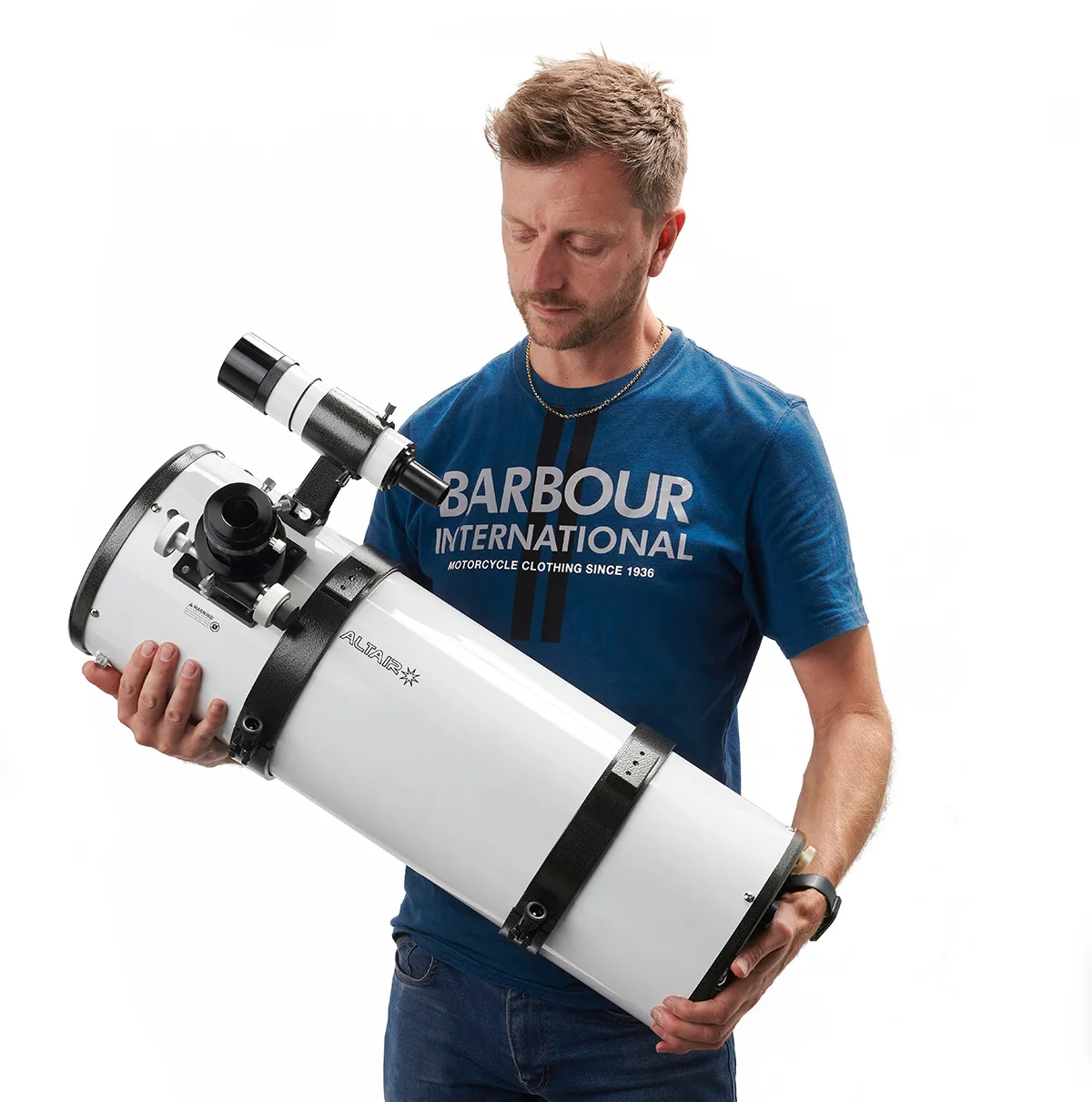
Once the tube was mounted and balanced, we turned our attention to collimating, or aligning, the mirrors.
This is a vital part of using a reflector, and at its fast focal ratio of f/4 it's important to be accurate as any errors will quickly show up as distorted stars in images. For advice on this, read our guide How to collimate a Newtonian telescope.
For this type of instrument, we would typically check the collimation before each use, even though it was mounted on a pier in an observatory.
If the scope was being removed from the mount after each session it would be even more important to check the mirror alignment each time.
This process may be off-putting to those new to astrophotography or unfamiliar with reflectors, but although a little tedious the adjustment is not difficult and it definitely becomes easier with practice and a couple of additional tools to help.
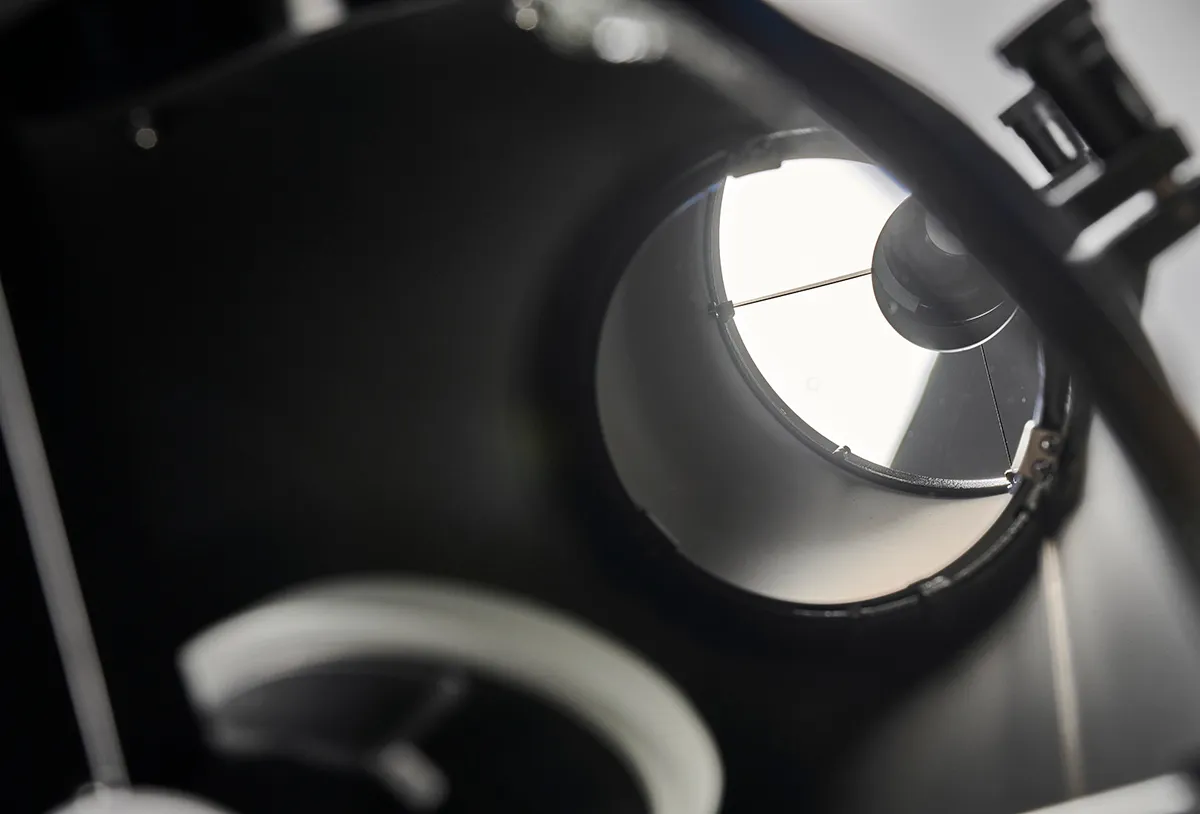
Collimating the Altair 8-inch F4
The primary mirror cell is a fairly standard design; three black sprung adjusters at the rear exert a push and pull influence on the primary mirror, which once aligned is held in place by three white locking screws.
This procedure of adjusting the primary mirror is quite straightforward, but we found that adjusting the secondary mirror – via three Phillips screws in the mirror holder on the spider vane – while viewing the adjustments through the collimation tool required a steady hand and great care to avoid dropping the screwdriver onto the primary mirror.
Once we were happy that both mirrors were correctly aligned, we used the supplied 35mm extension piece to fit an eyepiece and perform a visual confirmation.
Although there is no technical reason the telescope couldn’t double up as a visual instrument if desired, the amount of coma that is inherent in f/4 primary mirrors makes the view at the eyepiece quite distorted outside the centre of the view, with stars being stretched out towards the edges.
We felt that this would make prolonged visual sessions uncomfortable unless an additional correcting lens for the eyepieces was available.
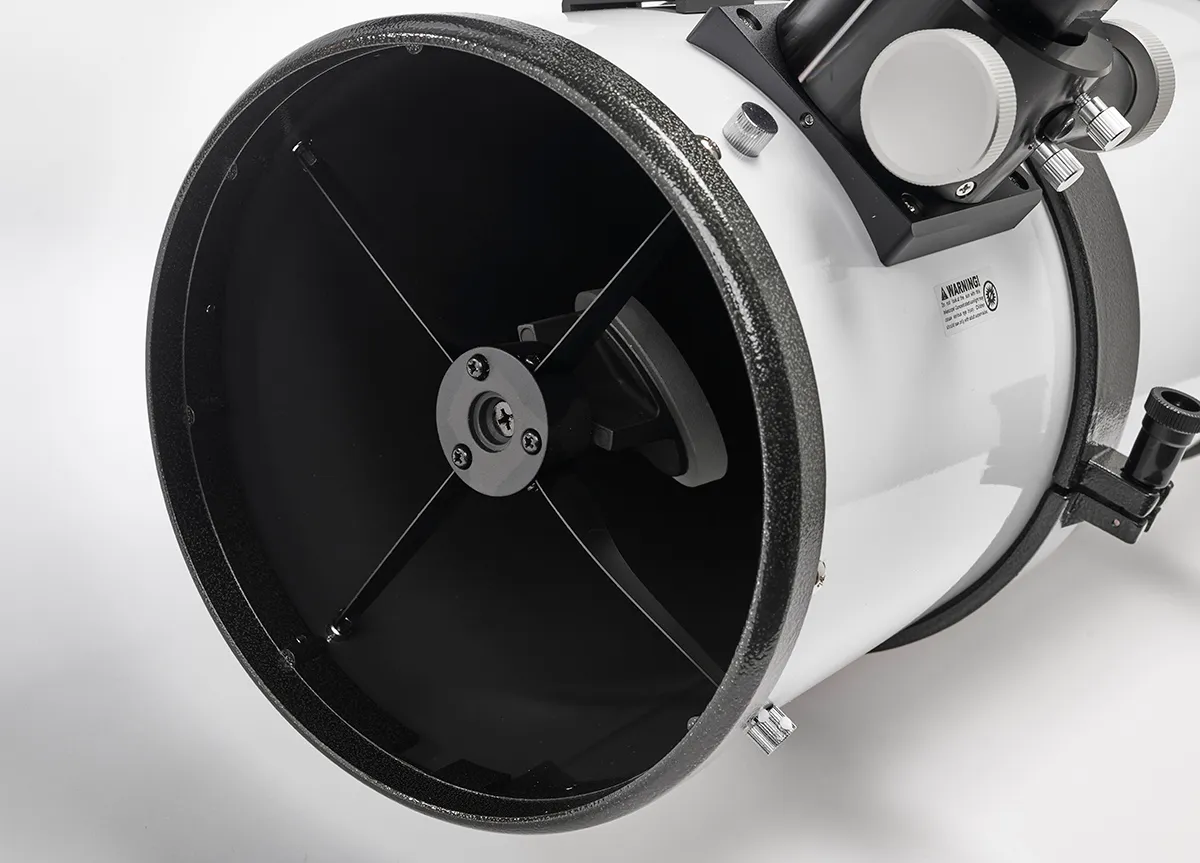
Astrophotography with the Altair 8-inch F4
As far as astro imaging is concerned, that inherent coma, which can spoil visual observing, is easily dealt with by adding a coma corrector in front of the camera.
We borrowed a 0.95x multi-purpose coma corrector to use with our camera and set about capturing some images.
Reflecting telescopes like this, with traditional spider vanes, produce diffraction spikes on bright stars and, love or loathe them, they provide a useful focus reference.
The shallow depth of field for this setup makes an auto-focuser seem appealing (which could be retro-fitted), but we found that when we were manually focusing, the focus held well over our session, once it was locked in place.
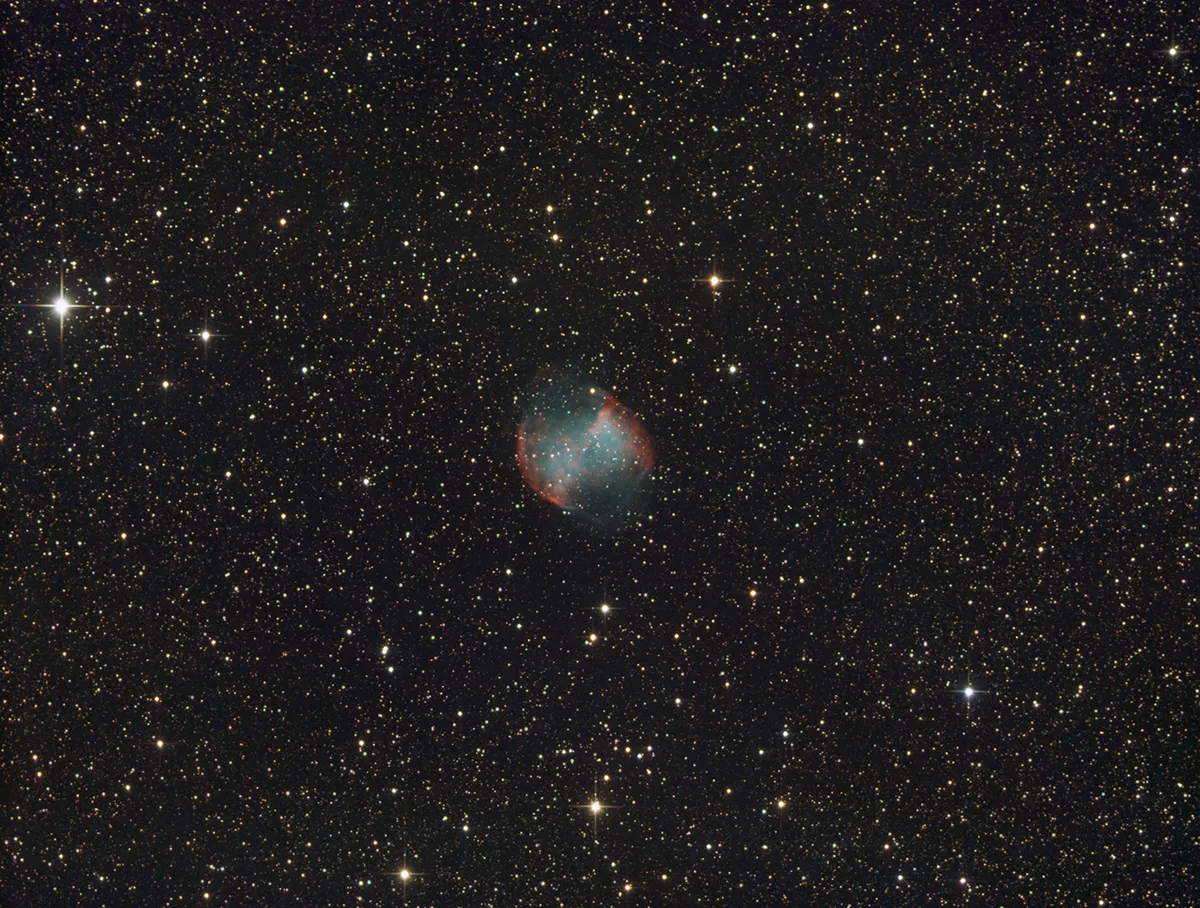
With the Dumbbell Nebula, M27, as our first target we used the rich surrounding star field to check star shapes into the corners of our photograph.
Our imaging camera has quite a small sensor compared to the larger sizes the scope can support, but the stars looked good – right into the corners of the view.
Some short 5-minute exposures reminded us of the attraction of fast Newtonian imaging astrographs, showing clean, high signal data and good colour.
The images had an almost organic feel that comes from the light-gathering power of an 8-inch mirror.
The Altair 8-inch F4 Photo Newtonian provides a useful base unit and when it’s combined with selected accessories it makes for a strong imaging setup capable of producing stunning deep-sky photographs.
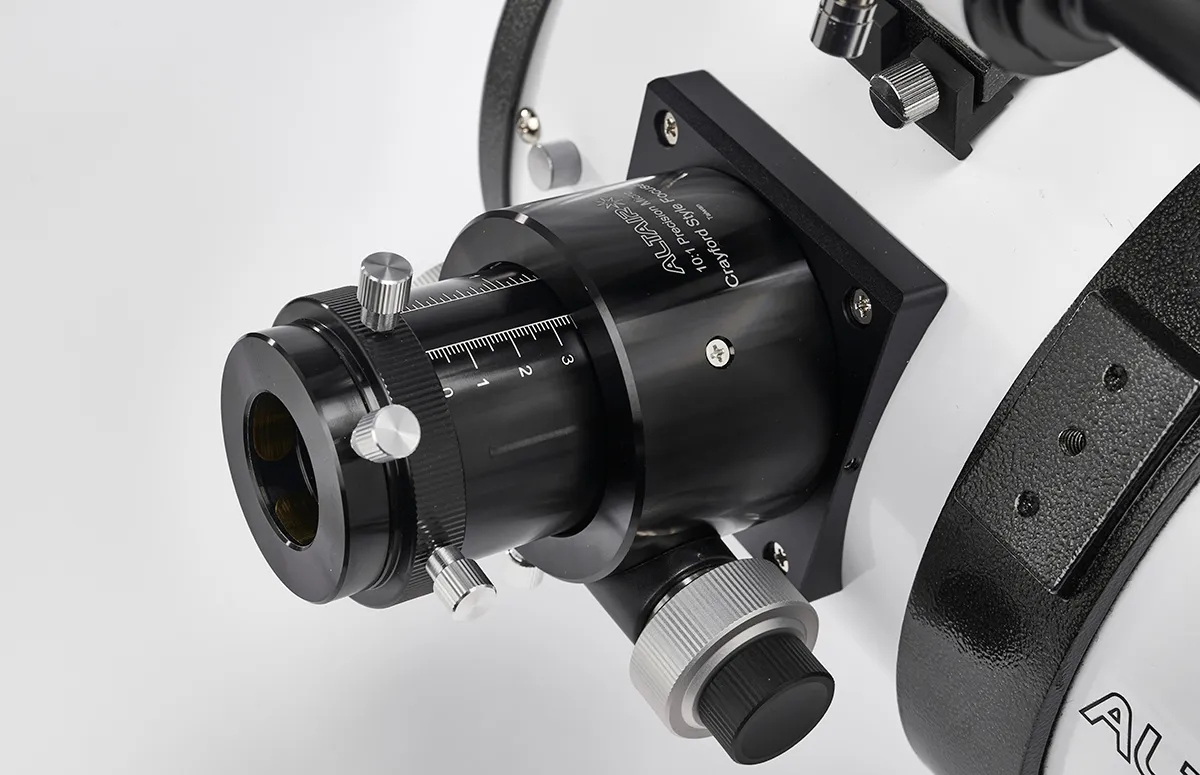
Altair 8-inch F4 optics
The key to the best astronomical views and photographs is the light-gathering ability of the telescope.
At 203mm, or 8-inch diameter, the primary mirror in the Altair F4 Photo Newtonian presents an ideal compromise between size and manageability.
There are several features of the optics that we like, and which add up to help create better images.
Without glass lenses to distort the incoming light, reflecting scopes do not suffer from chromatic aberration and can therefore be used with DSLR and one-shot-colour astro cameras without annoying halos spoiling bright stars and planets.
Both primary and secondary mirrors in this Altair scope have coatings to enhance the reflectivity of the mirrors, and the fast focal ratio of f/4 makes them ideal for gathering large amounts of signal, or data, in the shortest time.
Shorter exposures are easier to guide, produce less image noise and present less challenges than traditional, long deep-sky exposures.
The enlarged secondary mirror allows for 100 per cent illumination of APS-C-sized cameras using a coma corrector.
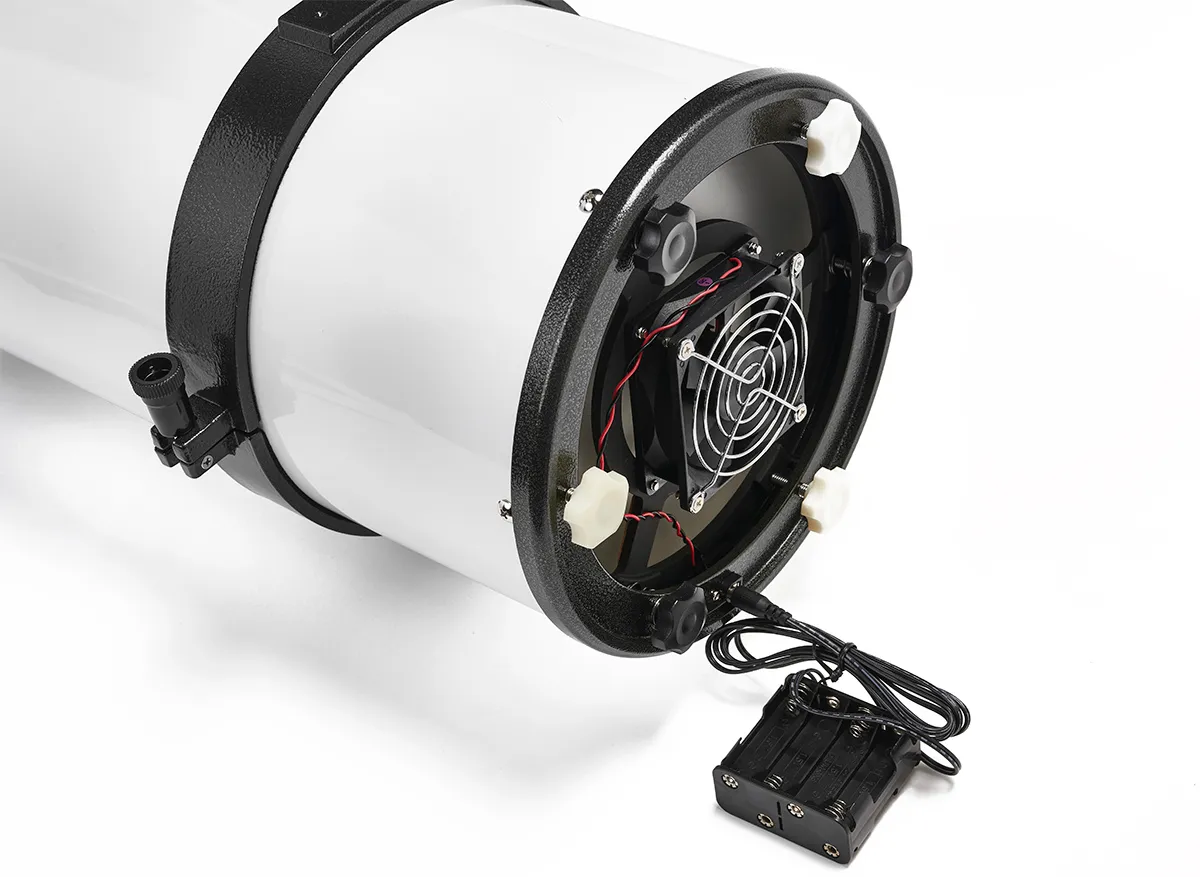
Altair 8-inch F4: 5 outstanding features
1
12V fan
The rear of the primary mirror cell incorporates a 12V fan that blows air onto the mirror and up around the sides into the tube. This acts as an aid to quickly cooling the mirror and steel tube down before use. A battery case for 8x AA size batteries is also included.
2
Over-sized secondary mirror
The diagonal, or secondary mirror is optimised for photography by being larger than standard. With only a minimal loss of contrast at the camera, the 70mm mirror ensures good illumination for today’s larger sensor astro cameras, when it’s used in conjunction with a good quality coma corrector.
3
Focuser
The Crayford-style focuser is basic but quite user friendly. It has a 1:10 reduction gear and extends 35mm, with metric and imperial graduations on the drawtube. It has separate thumbscrews to lock the focuser in position and to adjust the tension, while dual thumbscrews clamp your camera nosepiece in place.
4
Finderscope
An 8mm x 50mm straight-through finderscope is supplied with the telescope, a straightforward unit with two adjusting screws for alignment and crosshairs that ensure accurate pointing. The mounting shoe could alternatively be used for a separate guidescope, which is probably more useful on this instrument than a finderscope.
5
Rings and dovetail bar
The 33.5cm dovetail bar in Altair’s traditional red colouring attaches to the robust steel tube rings to firmly hold the telescope with enough separation between the rings for steady balance. The flat areas on top of the rings with standard threaded holes could be used for extra accessories or an additional guidescope.
Vital stats
- Price: £540
- Optics: BK7 glass mirror
- Aperture: 203mm (8-inch)
- Focal length: 800mm
- Focuser: 2-inch Crayford with 1:10 dual speed transmission
- Extras: Finderscope, 35mm extension tube
- Weight: 8.4kg
- Supplier: Altair Astro Ltd
- Tel: 01263 731505
- www.altairastro.com
This review originally appeared in the November 2021 issue of BBC Sky at Night Magazine.
